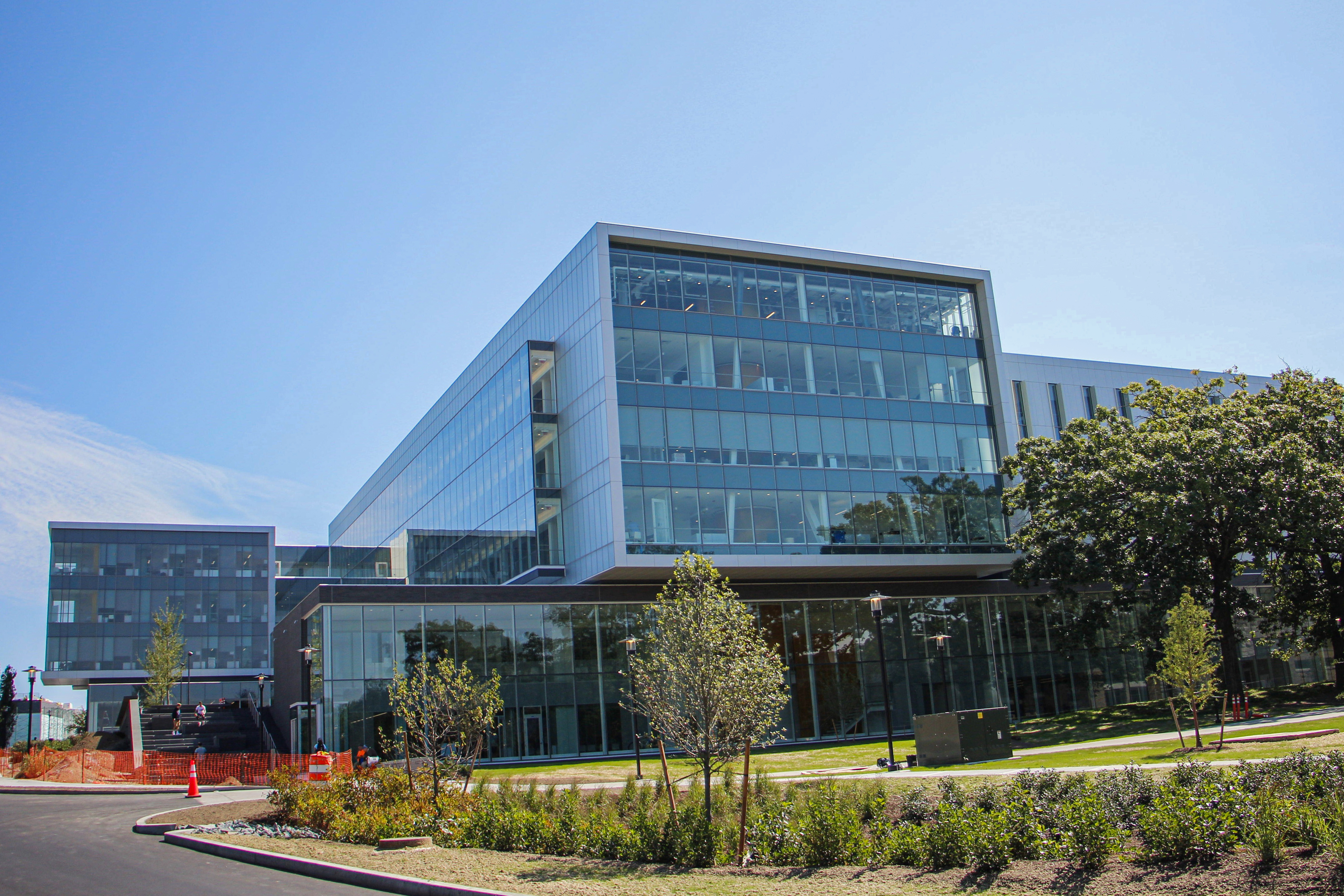The brand new engineering building is now open for classes. Photo by Greg Clark
Building opened for the first day of classes, but finishing touches are still being completed.
After years of planning and construction, engineering students were able to begin their fall semester in the new, $125 million Fascitelli Center for Advanced Engineering.
Rhode Island voters approved $125 million in taxpayer money for the project in 2014, according to The Providence Journal. In 2016, another bond was approved by voters for an additional $25.5 million to renovate and grow Bliss Hall, which has been the home of the College of Engineering since its construction in 1928. That building will officially reopen in the spring of 2020.
The project, while funded mostly by taxpayers, also received significant donations from alumni, businesses and others. Before construction began, according to URI Today, $7 million in donations had been received from companies such as Toray Plastics (America), FM Global, Taco Inc., and alumni including Barry Gertz ’76, Jerry Deroy ’71 and an anonymous alumnus.
However, the largest private donation by far was from the Fascitelli family, who donated $10 million to provide research and laboratory equipment for the building. Their donation also helped to establish an endowment fund. The building was named after URI alumnus Michael Fascitelli ’78 and his wife Anna following approval by the state Legislature and a signature from Gov. Gina Raimondo.
The equipment in the new building includes high-speed cameras, a nanoparticle analyzer and a liquid chromatography mass spectrometer, according to Bill Koconis, the senior director of development for the College of Engineering at the URI Foundation. The equipment purchased for the new building can cost anywhere from $10,000 to $100,000 or more.
The Fascitellis have a notable history of supporting the University, including donating $1 million to the construction of the Anna Fascitelli Fitness and Wellness Center, named after Michael’s mother, which opened in the fall of 2013.
“[This donation] really helped us leverage a deal with a company called Shimadzu,” Koconis said, who make “technical science equipment.”
The University has an existing agreement with the company, according to Koconis, which allowed them to be able to purchase roughly $9 million worth of equipment for just under $5 million. The “real-world equipment” will be used primarily by undergraduate students in their classes and capstones, as well as for research purposes.
“[Michael Fascitelli] is an alum of the University and of engineering,” said Koconis. “He has a very proud history of this University and supporting us…he has a vested interest in really wanting to support and make this University strong, so obviously we’re very proud of this gift.”
Koconis said the Fascitelli donation especially helped the University in having the funds to purchase equipment for the building.
“Really, that’s where the Fascitelli gift helped, [to] allow us to purchase that equipment,” Koconis said. “If we did not have that gift, we would not be able to buy new equipment for a while.”
The building houses seven of the eight engineering programs offered, which include: biomedical; chemical; civil; computer; electrical; industrial and systems and lastly mechanical. The eighth, ocean engineering, is housed at the Narragansett Bay Campus.
Other features of the building include student workspaces, offices, a cafe and space for all of the different engineering departments to work together on various projects. Koconis said the space for the various engineering departments to work together was lacking in the old engineering buildings.
While the new building is certainly impressive, there are still some kinks to be worked out before the official grand opening on Oct. 7.
“It doesn’t feel like it’s our space yet,” said Justin Winiarski, a senior civil engineering student. “I don’t think any of the engineering students have settled in yet because none of the open lounge spaces are put together.”
There’s still some construction going on, he added, on aspects such as the cafe and on smaller details, including molding and clearing out supplies.
“Hopefully, once everything’s furnished in a month or two it should be interesting and we’ll see how the dynamic is,” Winiarski said. “I’m excited.”





